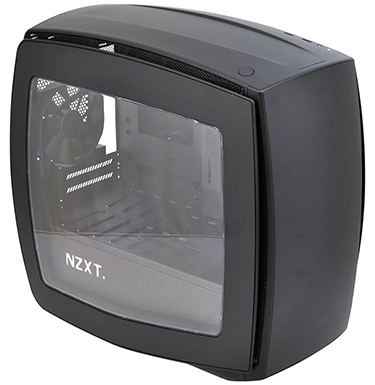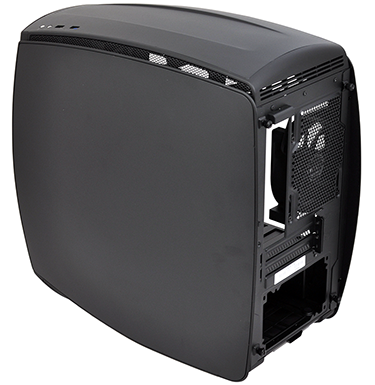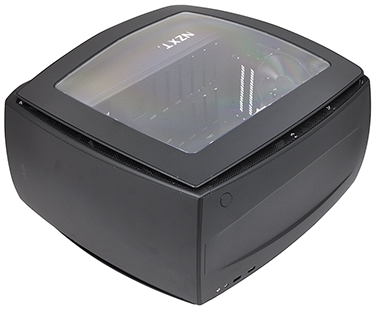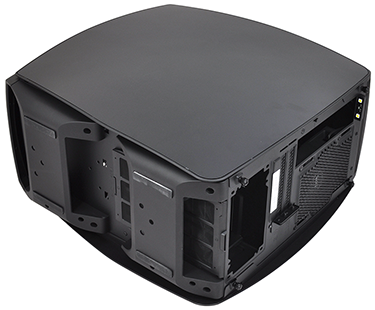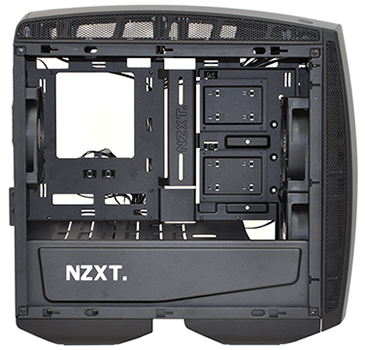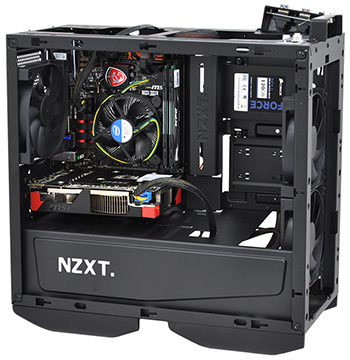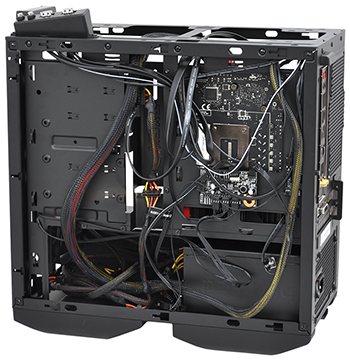Introduction
We're enthusiastic about mini-ITX around these here parts as the form factor delivers greater promise with each new generation of hardware. Pick the right components today and it's quite easy to put together a compact PC that will deliver a level of performance akin to a noughties' space station.
But contrary to the name, it seems being petite isn't the be-all and end-all of small-form-factor machines. We've already seen Fractal Design put forth a mini-ITX chassis with high-end ambition, and NZXT is getting in on the action with a new case dubbed Manta.
Priced at £110 and styled unlike any prior NZXT enclosure, Manta arrives with the goal of amplifying mini-ITX builds to incorporate lavish liquid cooling and top-notch performance. And it sure does look pretty, doesn't it?
In an effort to stand out from the crowd, Manta incorporates curved outer panels that give it a sleek, stylish aesthetic. You might automatically assume that the rounded edges mean lots of cheap plastic, but that's far from the truth. NZXT claims to be using a new manufacturing process that allows for the curved panels to be created using structurally reinforced steel, and it's a process that appears to work - each panel does feel remarkable rigid, and build quality is excellent throughout.
You'd expect nothing less at this price point, mind, and the quality feel of the material doesn't address the proverbial elephant in the room: Manta isn't exactly small. Dimensions of 245mm (W) x 426mm (H) x 450mm (D) make the case even bigger than the rival Define Nano S, and you wouldn't need to search for too long to find a micro-ATX case that's the same size or smaller. Heck, even standard-ATX chassis aren't much bigger.
Manta isn't one for downsizing, then, but the curved panels do have some merit. The natural bulge in the rear side panel creates more space behind the motherboard tray, and the windowed panel provides a great perspective of the internal cavern - the curve somehow accentuates the field of view.
Beauty of course is in the eye of the beholder, yet it's worth reiterating that Manta really does look exclusive. The smooth lines create a fluid finish that's cuter than we expected, and as with most NZXT enclosures, there's a choice of colour options. Our review sample is standard matte black, but more adventurous types could opt instead for black and red or black and white, and if you shan't be showing off, there is a windowless model, too.
Given the rounded edges, an orange and white BB8 variant wouldn't go amiss, but we're yet to be convinced by mini-ITX enclosures of this scale. NZXT does however provide good reassurance with a quality finish that includes a pull-out bottom dust filter, a top power button that offers good tactile feedback, a neat row of top I/O ports (dual USB 3.0 and audio jacks), a small button to toggle the rear I/O light, and all-black interior styling that extends right through to the cabling.
NZXT definitely knows how to make a good-looking chassis, and Manta is no exception. The side panels slide away after undoing two sets of thumb screws, though getting them back on requires a little more precision as the notches on each panel's square centre needs to be aligned.
Once inside, the cavern is relatively straightforward, with NZXT borrowing a few elements from some of its larger enclosures. The power-supply bay, for example, is sectioned off with a dedicated shroud, and optical-drive bays have fallen by the wayside. There are however four internal drive bays, two in the form of removable 2.5in SSD trays attached to the panel alongside the motherboard tray, and two more obscure 3.5in mounting points. One of these is behind the SSD trays and the other is at the end of the PSU compartment.
Speaking of which, it's interesting to note that Manta devotes more room to the PSU than it does to any other single component. A tell-tale sign of ATX supplies being behind the times, and their widespread use remains one of the barriers to truly small-form-factor PCs.
Taking away the top and front panels highlights the fact that Manta's cute curves add a significant amount of additional bulk. Both of these panels pull away with ease, and taking off the front reveals a clip-on dust filter that shields the front intakes.
NZXT has a trio of fans supplied as standard - two 120mm front intakes as well as a height-adjustable rear 120mm exhaust - and all three are connected to a PWM fan hub. It's a neat solution and a good way of making available more fan headers, but it's a shame the hub is powered by old-fashioned Molex as opposed to SATA.
What's clear is that Manta is meant for more than just air cooling. Both the top and the front provide a pair of 120/140mm fan mounts, allowing for up to 280mm radiators in each location. You could even add a third in the form of a 120mm radiator at the back if you felt particularly crazy, yet given the amount of free room, we're surprised that NZXT hasn't included brackets for a reservoir or pump.
Cable management is a doddle as the case does a grand job of hiding any clutter. A channel alongside the motherboard tray is great for routing thick cables, and there's ample room alongside the PSU to stow away any excess. None of the routing holes are rubber-grommeted, however it doesn't seem to matter as the end build looks very clean, and we appreciate the hole in the roof of the PSU compartment as it's ideal for GPU power cables.
Manta's a smart-looking bit of kit, there's no doubt about that, yet you can't help but wonder, who spends £110 on a performance chassis that will only ever support a single graphics card?






